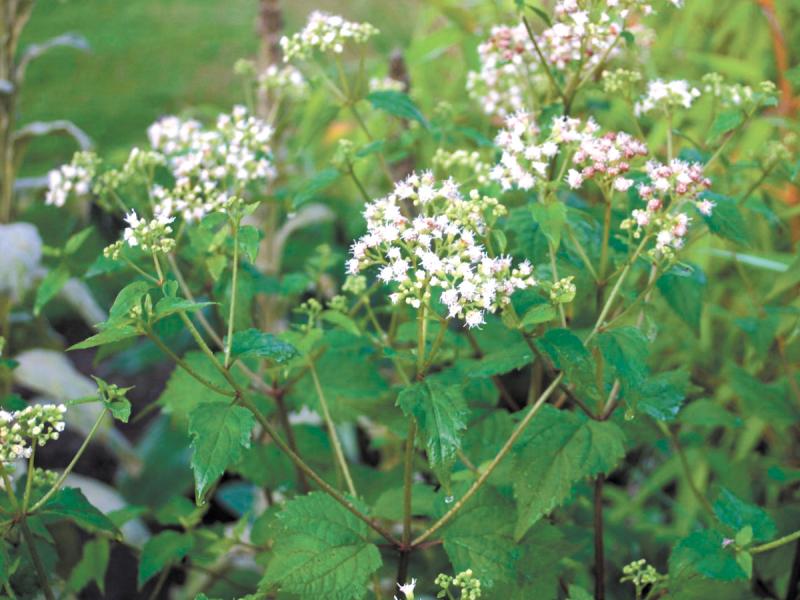It is called Milk Sickness, a poisoning caused by drinking milk from cows that have eaten the White Snakeroot plant. In the fall of 1818, Abraham Lincoln's mother became desperately ill, and Nancy Hanks Lincoln died of Milk Sickness.
Another pioneer woman, midwife and doctor Anna Pierce Hobbs Bixby, noted the seasonal nature of milk sickness and figured out that the disease was caused by a poisonous herb. This was confirmed when yet another medical woman, this one from the Shawnee tribe, showed her the White Snakeroot. It got the name snakeroot because early European settlers mistakenly thought the roots could treat snakebites.
In spite of its poison-to-cattle nature, White Snakeroot (Ageratina altissima) is often grown as an easy-care ornamental. One of the latest varieties of White Snakeroot is the oddly named Chocolate White Snakeroot, a plant introduction from the Mount Cuba Center in Greenville, with dark chocolate-brown leaves and shiny, dark-purple stems that accent the cloudburst of white flowers from late summer into late fall.
Because it blooms right up until frost, White Snakeroot is a vital nectar source for bees at a time when many other flowers have faded. This three- to five-foot-tall native perennial is also good for larger yards, though it does well in mixed borders in a formal garden or a more casual cottage garden. It even grows well along ponds or streams, or or woodlands with dappled light.
Plant it with blue flowers such as lobelia (Lobelia erinus), Blue Bachelors Buttons/Cornflower (Centaurea cyanus), Russian Sage (Perovskia atriplicifolia), and Beard Tongue (Penstemon) for a stunning contrast that welcomes butterflies and pollinators to your yard. The four- to seven-inch leaves stand out even in slightly shady parts of the garden. The leaves darken as the season progresses. Full sunlight will bring out the deepest, richest purple color in the leaves.
Plant White Snakeroot in moist, but well-drained soil in full sun or light shade. In rich soil, it will grow fast and tall, and may need staking. It grows fairly well even in dry soils. Water regularly, especially the first year planted. Let the soil dry out between waterings. Once established, these plants are pretty much carefree.
Snakeroot is a great self-seeder, but if you want to prevent the spread of seedlings, simply cut off dead flowers before they set seed. You can divide existing clumps and replant them either in early spring or late fall. Snakeroot is a perfect tall plant for the back of your summer garden. Just don't feed it to cows, or Abe Lincoln's mom.




















































